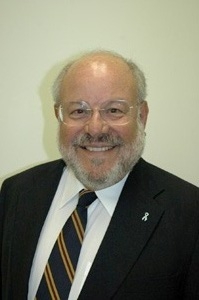"Guinea Pig Nation: How the NRC's new licensing rules could turn communities into test beds for risky, experimental nuclear plants" is what physicist Dr. Edwin Lyman, Director of Nuclear Power Safety with the Union of Concerned Scientists, titled his presentation last week.
The talk was about how the U.S. Nuclear Regulatory Commission is involved in a major change of its "rules" and "guidance" to reduce government regulations for what the nuclear industry calls "advanced" nuclear power plants.
Already, Lyman said, at a "Night with the Experts" online session organized by the Nuclear Energy Information Service, the NRC has moved to allow nuclear power plants to be built in thickly populated areas. This "change in policy" was approved in a vote by NRC commissioners in July.
For a more than a half-century, the NRC and its predecessor agency, the U.S. Atomic Energy Commission, sought to have nuclear power plants sited in areas of "low population density"--because of the threat of a major nuclear plant accident.
But, said Lyman, who specializes in nuclear power safety, nuclear proliferation and nuclear terrorism, the NRC in a decision titled "Population-Related Siting Considerations for Advanced Reactors," substantially altered this policy.
The lone NRC vote against the change came from Commissioner Jeffery Baran who in casting his 'no' vote wrote "Multiple, independent layers of protection against potential radiological exposure are necessary because we do not have perfect knowledge of new reactor technologies and their unique potential accident scenarios... Unlike light-water reactors, new advanced reactor designs do not have decades of operating experience; in many cases, the new designs have never been built or operated before."
He noted a NRC "criteria" document that declared that the agency "has a longstanding policy of siting nuclear reactors away from densely populated centers and preferring areas of low population density."
But, said Baran, under the new policy, a "reactor could be sited within a town of 25,000 people and right next to a large city. For reactor designs that have not been deployed before and do not have operating experience, that approach may be insufficiently protective of public health and safety... And it would not maintain the key defense-in-depth principle of having prudent siting limitations regardless of the features of a particular reactor design--a principle that has been a bedrock of nuclear safety."
That is just one of the many reductions proposed in safety standards.
"The central issue," commented Lyman in an interview following his November 17th presentation, "is that the NRC is accepting on faith that these new reactors are going to be safer and wants to adjust its regulations accordingly, to make them less stringent--on faith."
The key motivation, he said, behind the nuclear industry's push to significantly weaken safety standards is that the line of smaller nuclear power plants the nuclear industry is now pushing--including what it calls the "small modular nuclear reactor"--is that they are going to be "much more expensive" than the existing light-water nuclear power plants, the most common type of nuclear power plant, which are large and are cooled by plain water. Thus, he said, these "advanced" nuclear plants would be more costly to operate than using energy alternatives, "certainly wind and solar."
And the NRC is complying with the nuclear industry.
It's a demonstration of one of the alternatives for the acronym for the NRC--Nuclear Rubberstamp Commission.
The list of proposed safety reductions in the PowerPoint portion of Lyman's presentation under "Cutting corners on safety and security to cut costs," and what the nuclear industry "wants" in what the NRC calls its "Part 53" assemblage of changes, included, in addition to the already completed alteration of siting criteria:
 � Allowing nuclear power plants to have a "small containment--or no physical containment at all." Containments are the domes over nuclear plants to try to contain radioactive releases in an accident.
 � "No offsite emergency planning requirements." The NRC has been requiring emergency planning including the designation of a 10-mile evacuation zone around a nuclear power plant.
(Note: You can view every article as one long page if you sign up as an Advocate Member, or higher).





